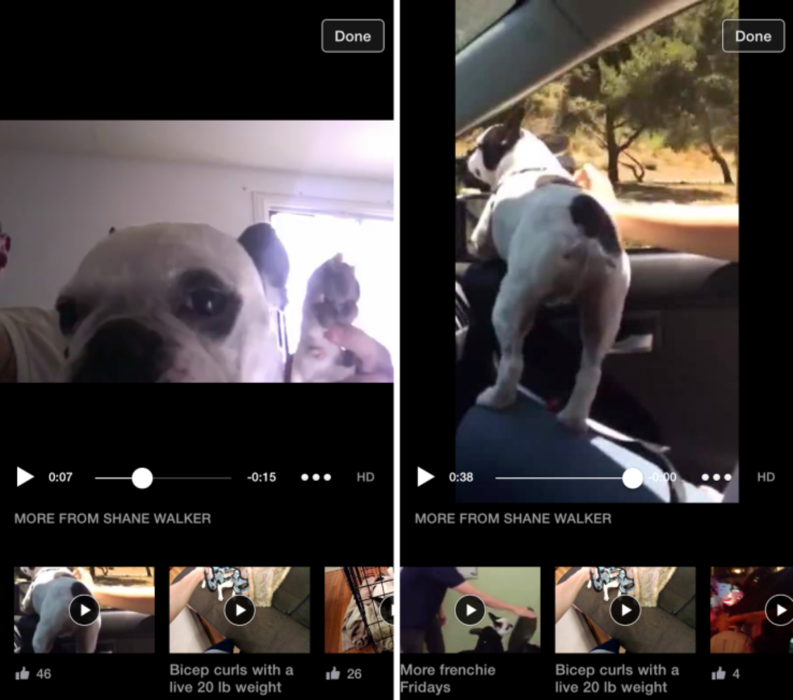When you think of online video, you think of YouTube. And it’s how the video hosting platform has managed to become an advertising juggernaut, and a jewel in the crown of Google advertising revenues. Facebook might not be able to compete yet in terms of the sheer number of videos being hosted, but it’s issuing a challenge to YouTube in other ways.
This week, Facebook declared that it now has a billion native video views per day, and it’s adding a views counter to all the videos posted to its platform. That’s yet another YouTube-type feature Facebook is adding to its videos, in addition to the “Related Videos” carousel it introduced last month.
For marketers, all this focus on video is a welcome development on Facebook. It may be the only type of branded content that Facebook is willing to organically promote in users’ newsfeeds. Engagement rates for video are generally higher than other pieces of content and the more organic engagement a post receives, the higher up the newsfeed it goes. While Facebook may not have the hosting capabilities of YouTube yet, it is a fertile ground for making things go viral. By posting a video that reaches its most rabid followers, a brand can reach a network of non-followers that is ten times as big. And since each share comes from someone you know on Facebook, there is a greater likelihood of you clicking on it.
YouTube might be the place where you go to search for videos, but Facebook is where videos find you. That’s arguably a better dynamic for marketers, as it increases their chances of finding an audience.
While YouTube has almost cornered the market on online video advertising, there are some key advantages Facebook has over it. One of the things YouTube hasn’t been able to successfully optimize are call-to-action links. This could be interactive buttons within the platform that surface at the end of a video asking the viewer to download, sign up or click for further information. This key lead generating activity has yet to be fully developed on YouTube. Facebook on the other hand is offering it for free. Now Page admins can select the type of call-to-action they want to attach to the end of their video for no cost. This is an extremely attractive feature, and a key opportunity for content marketers, especially those focused on B2B.
Facebook also has an auto-play feature for its videos, which makes all videos showing up in a news feed play automatically, albeit without sound. That is instant engagement, and a quick, automatic boost for views. Unlike YouTube where you actively have to click on the play button to be interrupted by an ad, Facebook’s video ads will be organically embedded in users timelines, and by playing automatically, they’re likely to attract and hold viewers’ attentions.
Finally, lets not forget that Facebook recently bought LiveRail, a programmatic video advertising platform that will help Facebook serve better quality, and highly targeted video ads to its users. The programmatic video ads space is still fairly new, and Google hasn’t had a great record in it. Facebook has a real opportunity to turn itself into the ultimate video broadcasting platform, and by the exorbitant rates it’s rumored to be charging for video ads, it could very well already see itself as that.








